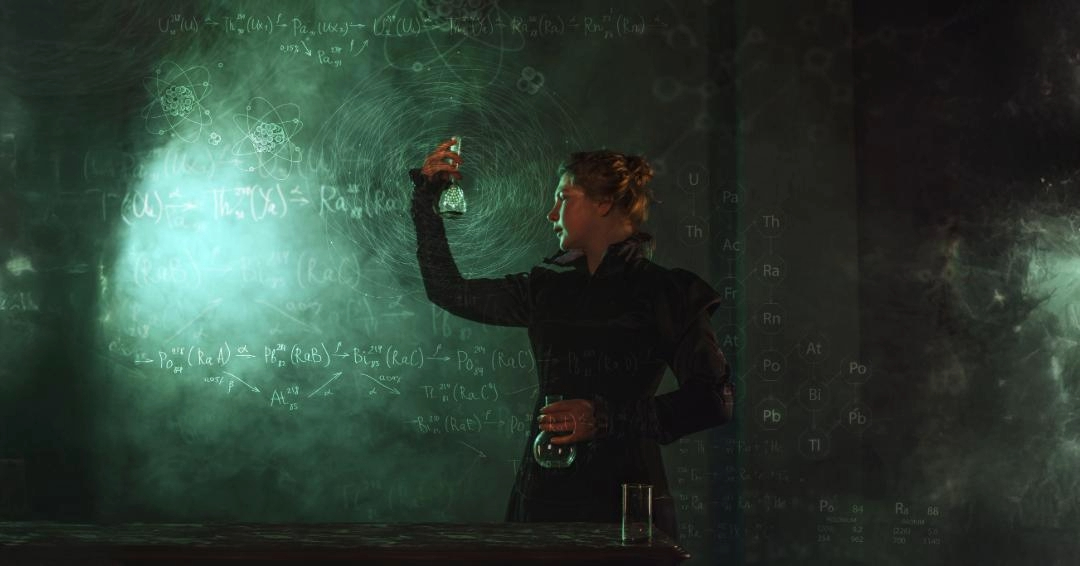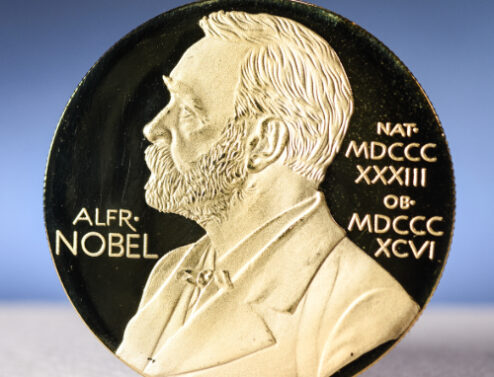Nobel Prize: Past Winners Whose Inventions Changed the World
Nobel Prize: Past Winners Whose Inventions Changed the World
The Nobel Prize, established by the will of Alfred Nobel, is awarded annually to individuals and organisations who have made significant contributions to humanity in fields like Physics, Chemistry, Medicine, Literature, Peace, and Economic Sciences. Over the years, some Nobel Prize winners’ inventions have profoundly transformed our world, touching nearly every aspect of life. From physics breakthroughs that have reshaped modern technology to medical discoveries that have saved millions of lives, the impact of these laureates is undeniable.

Let’s look at some of the most influential Nobel Prize winners and how their inventions have changed the world.
1. Wilhelm Röntgen (Nobel Prize in Physics, 1901) – X-Rays
Wilhelm Röntgen was the first recipient of the Nobel Prize in Physics in 1901 for his discovery of X-rays in 1895. His invention revolutionized the medical field, allowing physicians to see inside the human body without surgery. Before Röntgen’s discovery, diagnosing internal injuries or diseases required invasive procedures, but X-rays enabled non-invasive diagnostics that have since saved countless lives. Today, X-rays are used not only in medical imaging but also in industries like engineering, security, and astronomy.
2. Marie Curie (Nobel Prize in Physics, 1903 & Chemistry, 1911) – Radioactivity
Marie Curie, one of the most iconic figures in science, won the Nobel Prize in Physics in 1903 (shared with her husband Pierre Curie and Henri Becquerel) for her work on radioactivity, and later won the Nobel Prize in Chemistry in 1911 for discovering the elements polonium and radium. Her pioneering research laid the foundation for many developments in nuclear physics and cancer treatment. Radium, for instance, became a key component in early cancer therapies. Curie’s work also opened the door to the harnessing of nuclear energy, which would later reshape global politics and energy industries.
3. Alexander Fleming (Nobel Prize in Medicine, 1945) – Penicillin
Few discoveries have had as immediate and life-saving an impact as Alexander Fleming’s discovery of penicillin. Awarded the Nobel Prize in Medicine in 1945, Fleming’s discovery of the first antibiotic ushered in a new era of medicine, transforming the treatment of bacterial infections that were once lethal. Penicillin became widely available during World War II, saving the lives of millions of soldiers and civilians alike. It paved the way for the development of many other antibiotics, marking the beginning of the antibiotic age, which has dramatically increased human life expectancy and quality of life.
4. Albert Einstein (Nobel Prize in Physics, 1921) – Photoelectric Effect
Though Albert Einstein is best known for his theory of relativity, he received the Nobel Prize in 1921 for his explanation of the photoelectric effect. This work was critical in the development of quantum mechanics and had far-reaching applications, most notably in the creation of solar cells. Today, solar panels—based on the photoelectric effect—are central to renewable energy production, providing a clean, sustainable power source. Einstein’s work has thus contributed to technologies that combat climate change and promote environmental sustainability.
5. Francis Crick, James Watson, and Maurice Wilkins (Nobel Prize in Medicine, 1962) – DNA Structure
The discovery of the structure of DNA by Francis Crick, James Watson, and Maurice Wilkins, awarded the Nobel Prize in Medicine in 1962, marked a turning point in the life sciences. Understanding the double-helix structure of DNA unlocked new frontiers in biology, genetics, and medicine. It laid the foundation for the Human Genome Project, genetic engineering, gene therapy, and modern biotechnology. Today, advancements in DNA research have led to personalized medicine, genetic testing for inherited diseases, and breakthroughs in cancer treatment.
6. Niels Bohr (Nobel Prize in Physics, 1922) – Atomic Structure
Niels Bohr’s contribution to understanding atomic structure earned him the Nobel Prize in Physics in 1922. His model of the atom, which introduced quantum theory to explain the behaviour of electrons, became the foundation for modern atomic physics and chemistry. Bohr’s work influenced the development of quantum mechanics, which now underpins technologies such as transistors, lasers, and even quantum computers. From semiconductors in smartphones to MRI machines in hospitals, Bohr’s ideas have had a ripple effect across numerous industries.
7. John Bardeen, William Shockley, and Walter Brattain (Nobel Prize in Physics, 1956) – The Transistor
The transistor is perhaps one of the most influential inventions of the 20th century. Bardeen, Shockley, and Brattain were awarded the Nobel Prize in 1956 for their work on semiconductors and the development of the transistor. This small electronic device forms the foundation of all modern electronics, from computers and smartphones to radios and televisions. Without the transistor, the Information Age would not exist. Its invention revolutionised computing and communications, making it possible for technology to evolve at the exponential pace we see today.
8. Robert Edwards (Nobel Prize in Medicine, 2010) – In Vitro Fertilization (IVF)
Robert Edwards, awarded the Nobel Prize in Medicine in 2010, developed in vitro fertilisation (IVF), a technology that has brought the gift of parenthood to millions of families worldwide. Since the birth of the first IVF baby in 1978, this technology has evolved and improved, leading to millions of successful births. IVF has revolutionised reproductive medicine, offering hope to those struggling with infertility and advancing our understanding of embryology.
9. Katalin Karikó and Drew Weissman (Nobel Prize in Medicine, 2023) – mRNA Vaccine Technology
The COVID-19 pandemic highlighted the immense importance of mRNA vaccine technology, pioneered by Katalin Karikó and Drew Weissman, who were awarded the Nobel Prize in Medicine in 2023. Their ground-breaking work on modifying messenger RNA to create effective vaccines led to the rapid development of COVID-19 vaccines, which have saved millions of lives worldwide. The impact of their discovery goes beyond the pandemic, as mRNA technology holds promise for developing vaccines against other infectious diseases and treatments for various medical conditions, including cancer.
Conclusion
The Nobel Prize has long recognised individuals whose discoveries and inventions have shaped the course of history. These laureates—through their ground-breaking work in science, medicine, and technology—have changed the world in profound ways. Their contributions not only advanced their fields but also provided solutions to some of humanity’s greatest challenges, improving quality of life, health, and understanding of the universe. As Nobel Prize week unfolds, it is a reminder of the lasting power of innovation and the endless potential for discovery to transform the future.
Protecting Innovation: Partnering with PatWorld for Patent Searches
As these Nobel laureates demonstrate, ground-breaking inventions and discoveries have the power to transform industries and improve lives. However, protecting intellectual property (IP) is crucial for ensuring that innovators can continue to drive progress. Securing patents not only provides legal protection but also fosters further research and development by safeguarding an inventor’s rights. Whether you are a researcher, entrepreneur, or inventor, conducting a comprehensive patent search is essential to prevent infringement and protect your innovations. Partnering with a trusted patent search service like PatWorld can streamline the process, ensuring thorough and accurate patent searches. With their expertise, you can confidently protect your innovations, paving the way for future success while maintaining control over your intellectual property.
Let PatWorld be your trusted partner in IP research and innovation.
References:
- The Nobel Prize in Physics 1901 – https://www.nobelprize.org/prizes/physics/1901/summary/
- The Nobel Prize in Physics 1903 – https://www.nobelprize.org/prizes/physics/1903/summary/
- The Nobel Prize in Chemistry 1911 – https://www.nobelprize.org/prizes/chemistry/1911/summary/
- The Nobel Prize in Medicine 1945 – https://www.nobelprize.org/prizes/medicine/1945/summary/
- The Nobel Prize in Physics 1921 – https://www.nobelprize.org/prizes/physics/1921/summary/
- The Nobel Prize in Physiology or Medicine 1962] – https://www.nobelprize.org/prizes/medicine/1962/summary/
- The Nobel Prize in Physics 1922 – https://www.nobelprize.org/prizes/physics/1922/summary/
- The Nobel Prize in Physics 1956 – https://www.nobelprize.org/prizes/physics/1956/summary/
- The Nobel Prize in Physiology or Medicine 2010 – https://www.nobelprize.org/prizes/medicine/2010/summary/
- The Nobel Prize in Physiology or Medicine 2023 – https://www.nobelprize.org/prizes/medicine/2023/summary/


